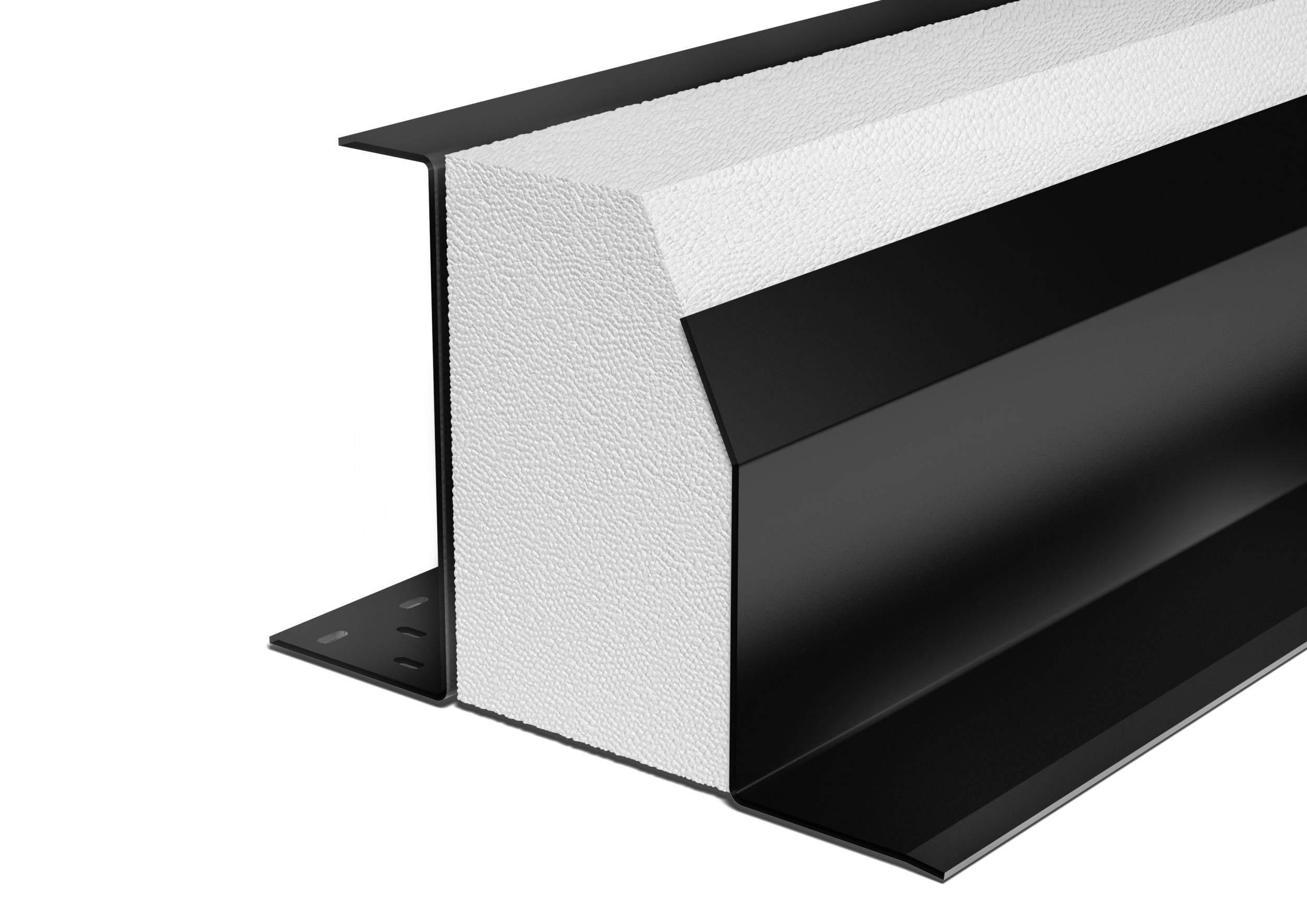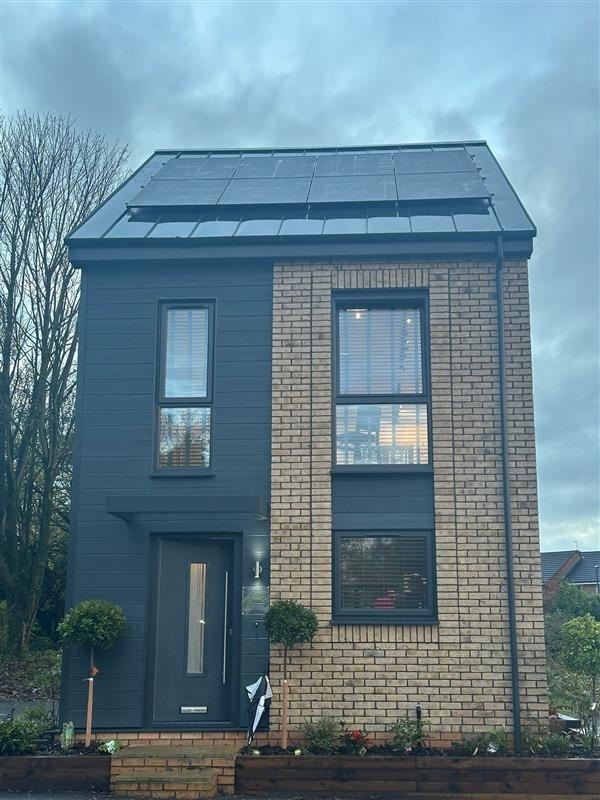
Fabric First has become the mantra for specifiers and developers of new buildings. By ensuring an integrated approach to the performance and material values of individual structural components, right down to the smallest details, a supremely better building can be achieved. That is, one in which all materials and systems work together to deliver ultimate energy efficiency and where no one component compromises the performance of others. Here, Richard Price, Catnic’s Technical Director explains further:
1. What is the importance of lintels in construction?
Steel lintels are the byword for architectural achievement; over the years they have enabled developers to meld higher design ideals with structural safety and legislative compliance in a cost-effective way. Now product development has resulted in a new generation - thermally broken lintels. These respond to increasingly stringent Building Regulations and in particular Part L.
2. Can you explain what the regulations call for?
Part L has cast a spotlight over the potential for energy, in the form of heat, to be lost through structural details. Of course the challenge presents itself as a dichotomy: the absolute need for steel lintels - most structures would not be built safely, compliantly or cost effectively without them – yet the requirement to minimise thermal bridging through structural details such as the lintels themselves.
We need to consider the Fabric Energy Efficiency Standard (FEES). It is this that forms the basis of the Building Regulations Part L 2013. FEES focuses on the thermal performance of walls, roofs and floors. In turn, without improvement, the proportion of heat lost through thermal bridges in the building fabric, such as the lintels, is therefore emphasised.
While the intricacies of Part L present challenges, there is a ‘ready to go’ solution that developers can rely on. This is based on the Part L 2013 Notional Dwelling. It is fully detailed in SAP 2012 Appendix R and demands a lintel Psi value (the heat lost through a linear thermal bridge) of 0.05W/mK to ensure minimal heat loss through the lintel’s capacity as a potential thermal bridge.
3. How is heat lost through structural components?
Energy, in the form of heat, is lost from buildings in two ways: firstly, through the main fabric of the building and secondly through the interfaces between different building elements. Heat lost through the building fabric: through walls, roofs, floors and doors and windows, called U values, is measured in W/m2K. Meanwhile heat lost at the junctions between these elements: at window heads, window jambs, window sills, corners, walls and floors and the walls and roof of a building at its eaves, called psi values, is measured in W/mK.
How these elements are specified and detailed is therefore critical in achieving the lowest thermal bridging potential.
The total fabric heat loss of the structure is calculated as the sum of the U value multiplied by the area plus the sum of the psi value multiplied by the length of the building.
4. What benefits can thermally broken lintels provide over traditional lintels?
There are several ways of improving the Psi values of lintels. Lower lintel psi values can be achieved by using lintels without a base plate (thus removing the potential for additional thermal bridging) and thermally broken, or separate, lintels within cavity wall constructions.
A relatively new development, thermally broken lintels are now enabling developers to substantially reduce the potential for heat loss through the thermal bridges that are effectively created in the construction of roofs, walls and floors and the junctions between these elements.
In essence all modern steel lintels from a reputable supplier can be used to comply with the Building Regulations. For developers wishing to achieve the lowest overall Psi value it makes sense to select lintels that can deliver the best performance; the lower overall Psi value, the lower the total heat loss of the building will be and an optimal building envelope based on Fabric First principles can be achieved. When specifying lintels the best option is always to use the Psi values provided by the lintel manufacturer themselves. For example, Catnic’s thermally broken lintel range offers the lowest Psi values on the market, at 0.02 W/mK.
5. How does a thermally broken lintel differ from a traditional one in its design?
Catnic is the first to bring to market a unique steel lintel design, incorporating a complete thermal break between the inner and outer leaf of a cavity wall. This delivers the thermal performance of two separate lintels with the same easy installation as a traditional steel cavity wall lintel. The result is a BRE-certified energy transmittance Psi value of 0.02 to 0.05 W/mK with no compromise to structural performance, modelled by the manufacturer and independently tested in a range of different wall constructions.
6. In summary, what can developers do?
With more than 10,000 lintel variations to choose from, developers need to consider the wall construction, opening and the load on the lintel in order to get the specification just right. A reputable manufacturer can help with the technical details and Catnic’s own lintel scheduling service (CLASS) is a free, dedicated resource. When it comes to energy performance and the Fabric First philosophy, it is worthwhile remembering that Psi values are not just affected by the lintels themselves, but also by the choice of wall construction, the type of insulation used and the position of windows. By replacing traditional lintels with Thermally Broken Lintels, developers can reduce heat loss through window head details, a key area of linear thermal bridging, by up to 96%.
This is possible by combining the thermal performance of separate lintels within a single lintel format that offers the same stable installation benefits of a traditional cavity wall lintel, delivering industry leading linear thermal transmittance psi values of 0.02 to 0.05W/mK and safe working loads.
More
-
![]()
- SolarSeam
- Urban
Ultrapanel®and Catnic Urban Deliver a ‘House in a Day’.


